Weathervanes and Wellingtons
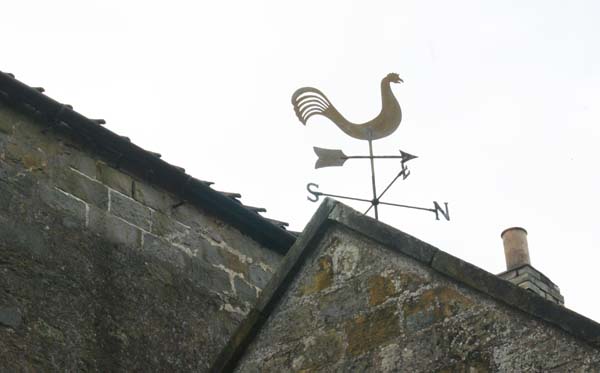
As I walked past this weathervane recently it was getting quite a battering from the wind, spinning and jittering left and right, undecided, buffeted into whining as old metal does. It made me think about how it actually worked – the compass points were correct, but I wasn’t sure about the other bit.
Weathervanes have a simple design, but in order to function, they need to be perfectly balanced on their rotating axis. They also need an unequal area on each side that the wind can blow against. Additionally, weathervanes must be located on the highest point of a structure, and away from other tall buildings that may affect wind direction.
As the weathervane spins to reduce the force of the wind on its surface, the end with the least surface area turns into the wind, and thus indicates the wind direction. So, if it is pointing North, it means the wind is coming from the North.
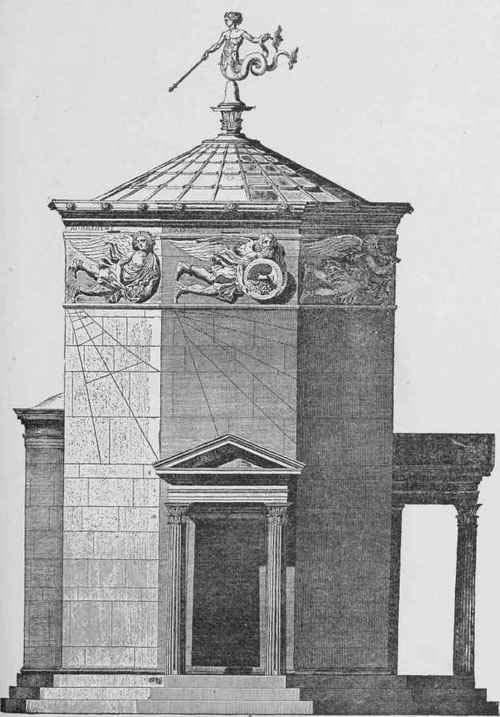
The first “true weathervane” is often thought to be a bronze structure that was erected atop the Tower of the Winds in Athens in 48 BC by Greek astronomer Andronicus. This weathervane took the shape of the Greek god Triton, who has the body of a man and the tail of a fish, and was between four and eight feet long. The tower was octagonal, with a different wind deity carved on each of the eight faces. With a change in wind direction, Triton indicated which god would control the weather that day.
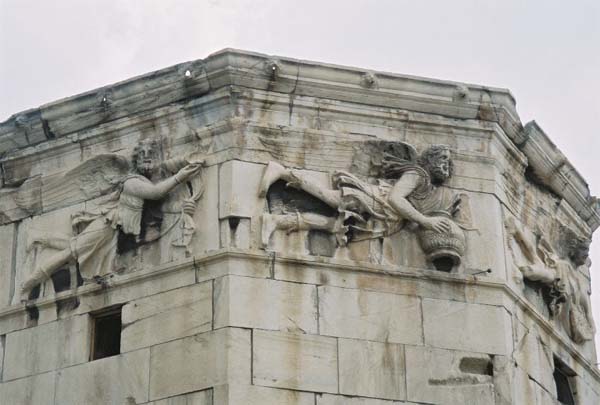
Tower of the Winds in the Roman Agora in Athens – image Ricky Rood
One of the gods carries Spring flowers, another a shield full of hail, and one is friend to the farmer, carrying fruit and grain.
The tower of the winds must be one of the most ingenious creations of ancient architecture, in addition to the gods, the eight outer walls exhibit sundials and the interior contained a water clock.
The Vikings are also credited with using a form of weathervane to predict the weather in the 9th century AD. These simple designs were made of bronze and other metals and replaced traditional cloth flags on Viking ships. They were frequently quadrant-shaped and depicted an animal or creature from Norse myth.
During this time the popularity of weathervanes exploded when a papal edict helped bring the weathervane to the skies of most of Europe. Rome declared that every church in Christendom must be adorned by a cockerel, a symbol to remind Christians of Peter’s betrayal of Christ. While these cockerels were at first not intended as weathervanes, they were eventually combined with the weathervanes that already dotted many church steeples to create the familiar rooster-shaped weathervane common today.
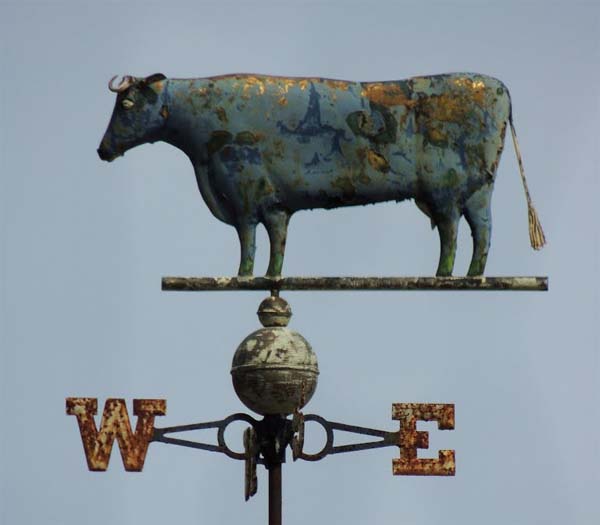
Cow Weathervane – image Taoab – Panoramio
Lots of other unusual and interesting subjects have been chosen for weathervanes, this one is in the shape of a cow, wrought in copper. I think the ‘folk art’ styling of many weathervanes is very attractive – this c. 1930 beautifully crafted whale, also in copper is a perfect example.
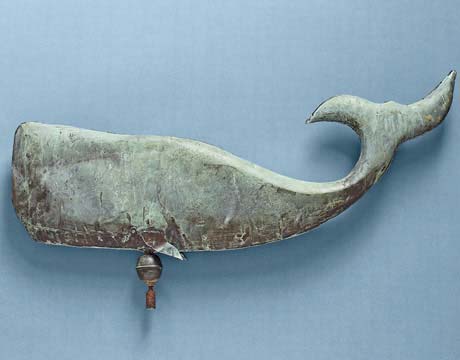
Whale Weathervane – image from Country Living – Charles Schiller
The word “vane” actually comes from the Anglo-Saxon word “fane”, meaning “flag”. (In medieval Europe lords and noblemen flew banners and flags from castle towers. These flags were not intended to predict the weather, but actually helped archers calculate the direction of the wind when defending the castle. Through the years, the cloth flags were replaced by metal structures).
As I stood and watched the cockerel weathervane spinning round I noticed that my feet were getting cold and very wet, my wellington boots were letting in the snow and slush through a huge split. I’m now enjoying a new pair, with marvellously grippy soles.
Thanks to Weathervanes Plus and Denninger for weathervane details and information

4 Comments
Interesting stuff. The Tower of the Winds is a great name. We have a wise owl weather vane on top of our barn who has been in the family for years.
Such an interesting building and I love the gods carved in stone. How lovely to have a family weather owl giving wisdom from the barn. I’d love one at my workshop – and have animals, or birds at the compass points, so I could say ‘it’s a shrew wind today’ or ‘Magpie is brewing storms’.
very interesting! We wouldn’t be able to put on on the house because we are surrounded by trees though we do get a lot of wind. lots of open area around the shop though. no snow here but I do need some calf high rubber boots for mucking out the turtle pond which needs to be done this year.
I’ve found the best for pond clearing is bare feet, only because I’ve never managed it without water going over the tops of boots! What form would your weathervane have if you placed one on the shop?